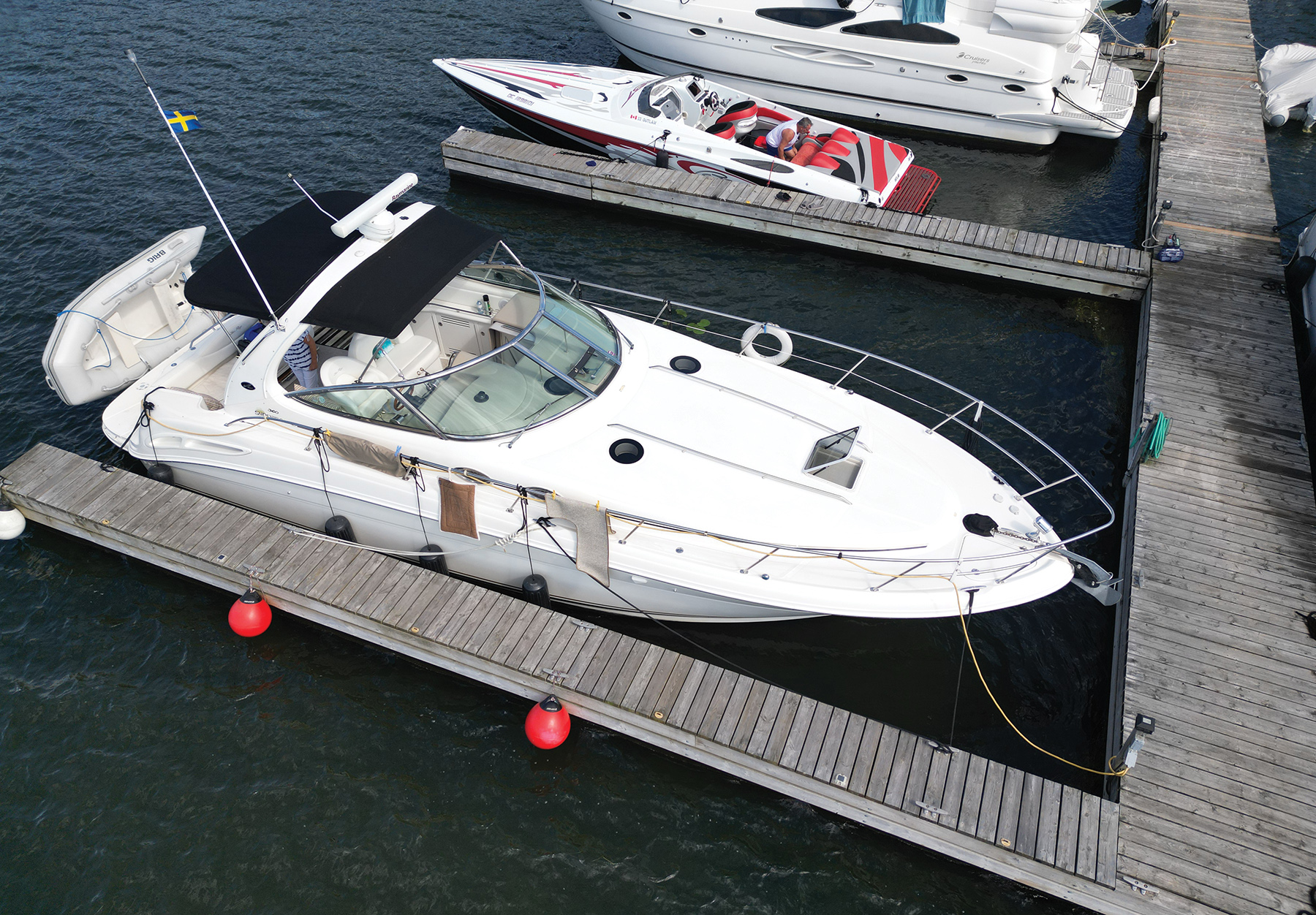How to master control of your boat during heavy winds!
Dusty Miller
When I‘m teaching boat handling classes, I focus a lot of attention on the wind and the effect it has on maneuvering your vessel. Whether you’re cruising in an 18-foot runabout or a 45-foot sport cruiser. All boats in the water are subject to the wind.
In fact, it’s one of the main reasons why so many boats are tightly secured to a dock. When planning a day on the water, there’s always a chance strong gusts may develop later in the day. I often hear, “what do I do if it’s really windy? I won’t be able to get the boat back into this slip. It’ll be so embarrassing if I make a mess of it with everyone watching, and I might break something.”
Let me share a little-known fact. It’s easier to bring a boat into a slip when it’s windy since it gives you something to work with. Keeping that in mind, always pay attention to where the wind is coming from. The weather channel might say something like “winds are from the northwest at five knots with occasional gusts to ten.’ That’s great information when you’re in open water, but it’s not pertinent while at the dock.
Inshore winds vary a lot in speed and direction. They can bounce off nearby hills or buildings and swirl around points of land. This is particularly true when approaching or going though locks.
All you have to do is simply look at the water. The direction of the ripples will instantly tell you it’s direction and strength. Remember, the higher the ripples, the stronger the wind.
If you’re tied to the dock or in the slip, there is plenty of time to determine the direction the wind is blowing. However, stopping on the water to determine where the wind is blowing is a different story. This when you should consider the safety position. This position simply involves turning your stern into the wind, which is very easy and an effective means to hold your position since air passes evenly down both sides of the boat. All you have to so is gently reverse (touching the throttle in and out) to hold your position. If you have a single-engine vessel, use the throttle and turn the wheel accordingly to keep the stern into the wind.
When you are tied to the dock, the direction of the wind can indicate what line to untie first. For instance, if you’re tied fore and aft with two springs, always untie the line closest to the wind last since the line is supporting most of the boat (other lines may even be slack). If the wind is blowing on the bow, let the spring lines off first then the stern line. The bowline will hold in a stable position. If the wind is blowing off the dock, you have a choice. You can let the stern line off last and the bow will swing away from the dock. The opposite will happen if you untie the bowline last.
If the wind is on shore, blowing your vessel towards the dock, it doesn’t matter which order you untie since the boat will stay against the dock. But here’s another trick. Winds are usually gusty, some more than others, and when you want to turn into the wind there is usually a lull. What often happens is the lull ends just as you’re starting a turn and you get blown back to where you started? What you do is wait until the wind is at its peak to begin your turn. When the gust is strongest, it has no place to go but down, so you will be getting underway in the lull between gusts. Try it.
In fact, consider trying all these tips. Start when the air is light. Take your boat out and see how the wind affects your boat, then work your way up to stronger, gustier days. When you know how the wind affects controls – whether strong or light – you will know how much throttle or turning you will need to do.
Keyword : boat handling, boat handling course, BOAT trailer tips, BOATING advice, BOATING DIY, BOATING Guru, BOATING hints, BOATING hitch types, boating in the wind, boating lifestyle, Boating Lifestyle Magazine, boating on a windy day, BOATING Tech, Boating Tech Talk, boating tips, BOATING Touring, choosing a hitch, docking in the wind, docking your boat, expert BOATING advice, Handle with Care Column, hitching a trailer, how to drive a boat, How to fix your boat, how to hitch a BOAT trailer, How to tow a boat, PFD Life Jackets boating safety, towing tips, what boat is best, wind boat handling, boat handling course, BOAT trailer tips, BOATING advice, BOATING DIY, BOATING Guru, BOATING hints, BOATING hitch types, boating in the wind, boating lifestyle, Boating Lifestyle Magazine, boating on a windy day, BOATING Tech, Boating Tech Talk, boating tips, BOATING Touring, choosing a hitch, docking in the wind, docking your boat, expert BOATING advice, Handle with Care Column, hitching a trailer, how to drive a boat, How to fix your boat, how to hitch a BOAT trailer, How to tow a boat, PFD Life Jackets boating safety, towing tips, what boat is best, wind
